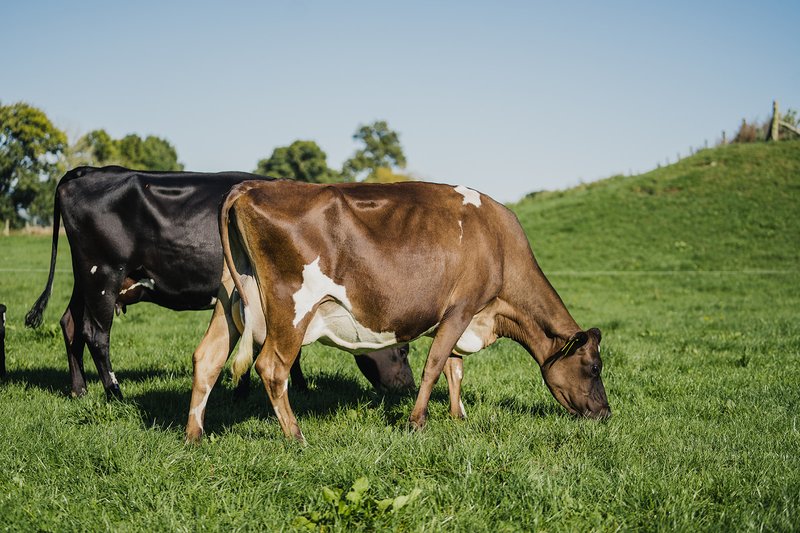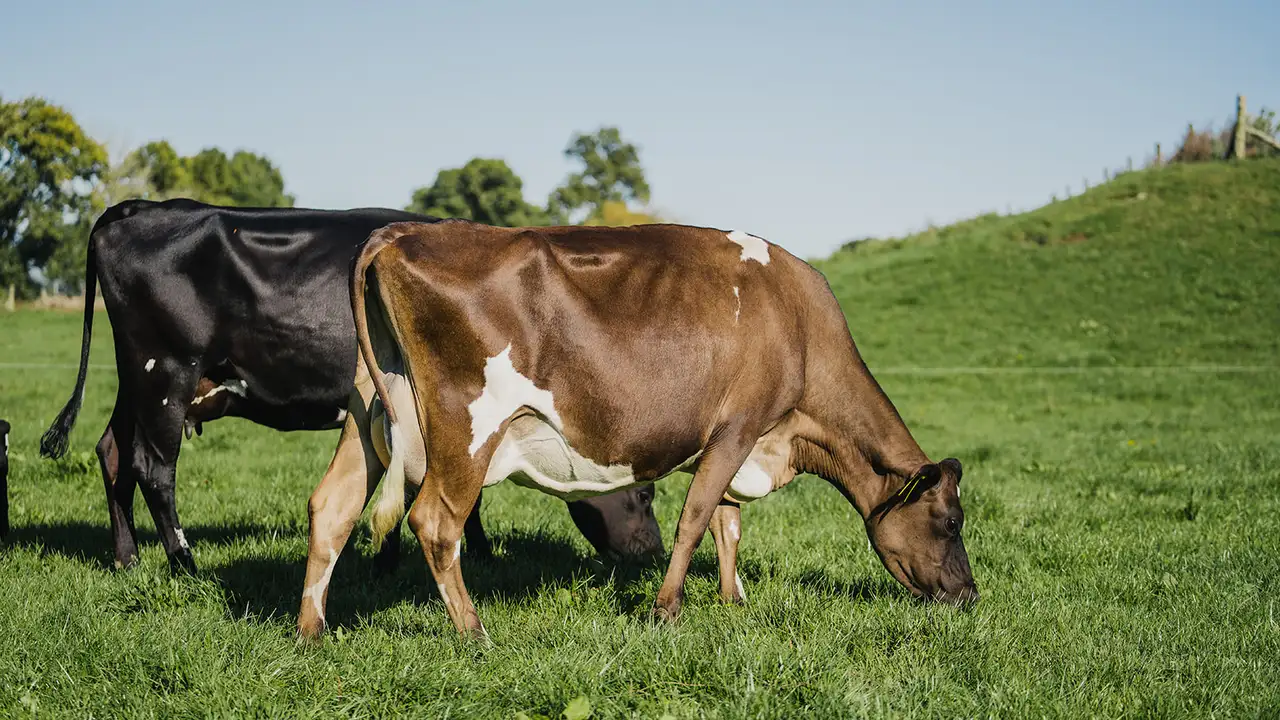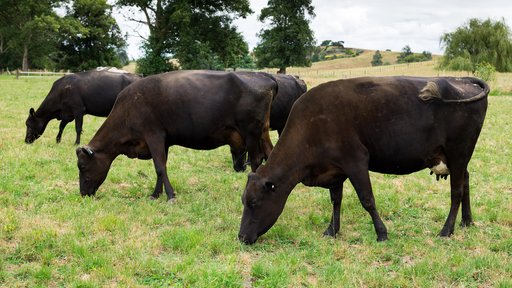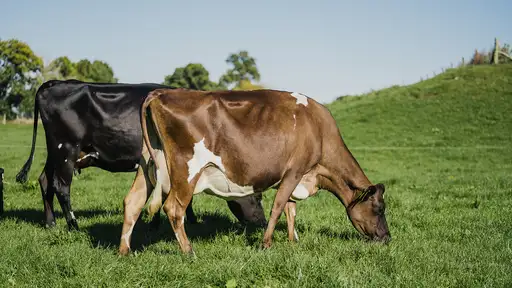
Heat stress has significant welfare implications for animals. For dairy cows it can also impact feed intake, milk production, fertility and calf birthweight.
Our heat tolerance breeding programme aims to provide New Zealand farmers the ability to have high genetic merit dairy cows with improved heat tolerance.
How?
Back in 2014, LIC was the first to discover the slick gene in cattle, which produces a short hair coat that improves heat tolerance.
Since then, we have been working on a breeding programme to incorporate the gene from the Senepol breed (a breed that originates from the Caribbean) into elite New Zealand dairy animals.
Research results
The latest trial found cows carrying the slick gene had lower rumen temperatures (0.5-1.0°C) compared to their non-slick counterparts when the Temperature Humidity Index (THI) exceeds 73 (around an ambient temperature of 26ºC and a humidity of 60%).
Although a one-degree temperature decrease doesn’t sound significant, it goes a long way to helping cows feel cooler overall.
Next steps
The trial also showed slick heifers (which are 87.5% dairy) produced around 18% less milk than high genetic merit dairy heifers without the slick variation.
Before we offer heat tolerant genetics to farmers, we need to make sure cows that have the slick coat also have high genetic merit and milk production expected of New Zealand dairy cows.
If the breeding programme continues to progress as expected, Kiwi farmers will be able to breed heat tolerant cows by 2029.
For more detail read this published research paper - The Benefits of a Slick Hair Coat for Heat Tolerance in New Zealand.



